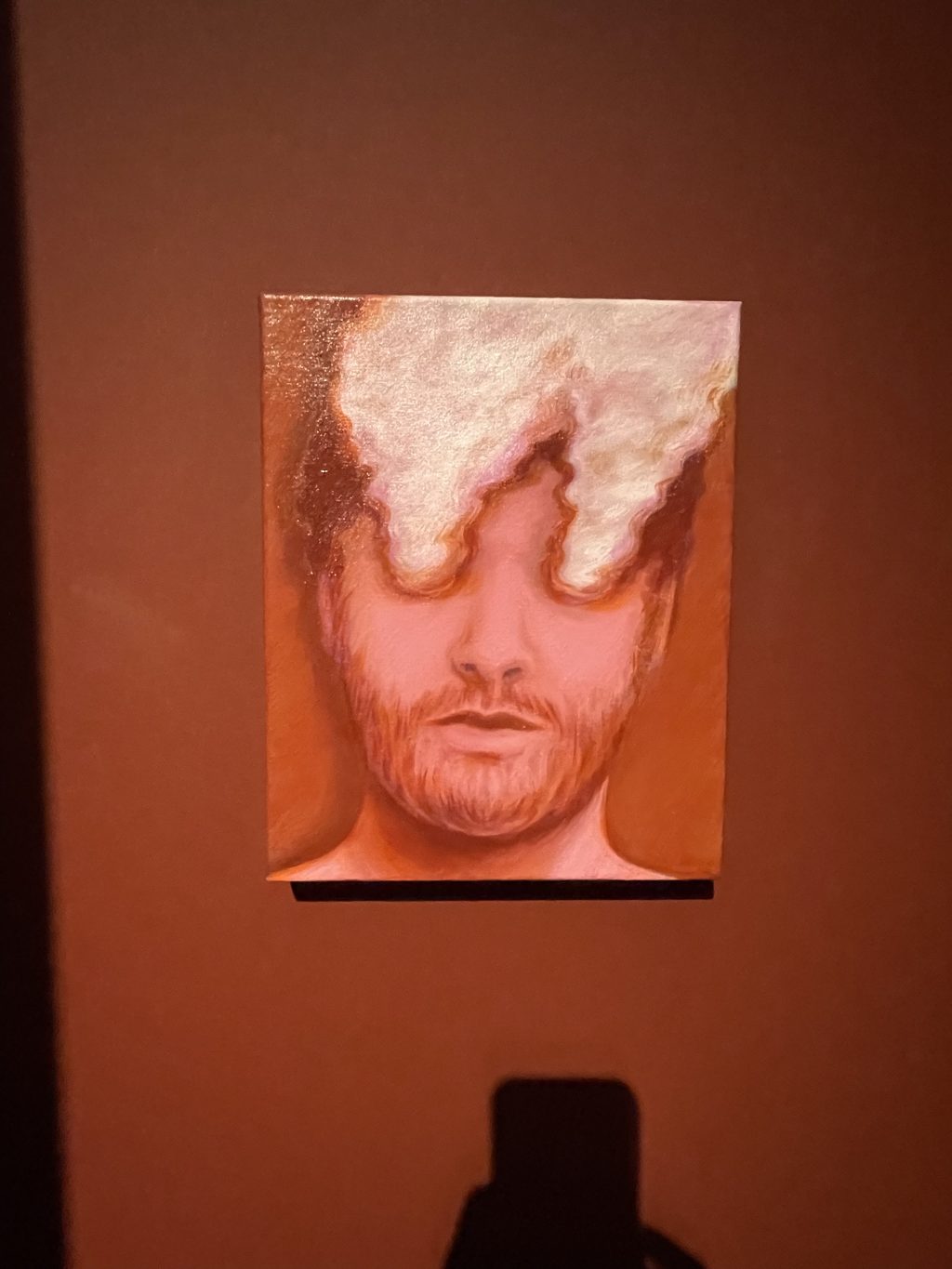Recently when I was in Belgium to visit Art Brussels and see some gallery shows something strange happened. While I was floating through the city, browsing the fair, I started noticing elements of surrealism in almost every object I looked at: architecture, shop displays, art works. And I’m not talking about the paintings in the René Magritte Museum which I visited on my last day. I mean contemporary works made by artists who will probably wince at the suggestion they had anything to do with Magritte.
The spirit of Magritte looms large
The spirit of this surrealist master, who lived and worked in Brussels and helped to make surrealism a household name, looms large in the city. He‘s a national treasure, also something of a brand, a marketing tool, almost a cliché of art made in Belgium.


But however contentious the relationship between surrealism and contemporary artists might be these days, I sensed a special force field that makes art in Brussels take on surreal vibes. It might just be the curators and gallerists who deliberately select works that reflect the inclinations of a surrealism loving audience, or artists subconsciously infusing their work with certain references when they prepare for a show in Belgium. Or surrealism – from the beginning a murky term with conflicting definitions (something with dreams, sexual desires, deliberate mismatches, „As beautiful as the chance encounter of a sewing machine and an umbrella on an operating table“, Comte de Lautrémont put it) – has lost its ism and is now über-real, a no-brainer generic term for all seasons. But that is a discussion for another day.



Surreal encounters in the galleries
For now I only want to share some of my surreal encounters: At Barbara Gladstone Gallery I found myself surrounded by strange livesize stickfigure portraits with human heads mounted on brown boards and suggestive nametags painted on: Le Geant Aveugle de Freudenstadt (The blind Giant from Freudenstadt), Rocca Swenty di Malaga (Schwuler Felsen von Malaga). One portrait came with the name of a real historical figure: Alfried Krupp von Bohlen und Halbach, a German industrialist and Nazi profiteer. His figure had the crude look of a spider. So what‘s the hidden message? Ceci n‘est pas und pipe!






The works are by Jos de Gruyter and Harald Thys, Belgian artists known for their irritating dark humorous installations made of everyday objects. Their animated faux folklore figure circus Mondo Cane at the Belgian Pavillon were a hit at the 2019 Venice Biennale. Now they have a double show in Brussels. At KIN, a brand new gallery space run by curator-mastermind Nicolaus Schafhausen, de Gruyter & Thys slide further down the rabbithole of surrealism. In a cavernous ground floor space of BNP bank HQ on Rue de Ravenstein they offer a mysterious microcosm of humanoid creatures in brightly lit glass vitrines: rats, spiders, lobsters (hello Dalí!), all kinds of bugs with human heads revel in artfully arranged bric-a-brac. Dr. Frankenstein has become an entomologist, Franz Kafka’s beetle dreams went kinky and David Cronenberg‘s Fly has gotten creepy company. For me that’s surrealism supreme.




Highlights at Art Brussels
At Art Brussels I feel drawn to the pact gallery booth with its lime green walls, round cut-outs, pink curtains and paintings of a naked woman torso bound bondage style by braids of red hair. Behind the curtain in a cozy separée the irritating image of a young man with smoke rising from his eyes. The works are by young French painter Lise Stoufflet and have a cheeky surrealistic quality with stinging undertones – like the roses in the knocked-over vase in another large painting.



Then I got fooled by Louka Anargyros’ sculptures. For his solo show at Septieme Gallery the French artist who works in Copenhagen built a deserted motoGP locker room in which race suits are hanging from hooks. There is a feeling of hyper masculinity, adrenalin and a erotically charged suggestion of naked bodies in the white cube-like room. Until you realize the protective gear is made of ceramic, painstakingly formed and painted to imitate leather. Instead of nametags and sponsor logos the suits are branded with homophobic slurs: Sissy, Fag, Pédale. By affixing his logos, Louka points out the endangerment of queer bodies, the need for protection and at the same time transforming them into badges of power. And he is doing it with strategies of surrealism: a rose is not a rose is not a rose. The ceramic race suits are the shedded, repurposed skin of toxic masculinity.



Finally I stumbled into Alice Guittard’s surreal marble magic: the artist fashions hard stone into the softest forms while playing with perception, high and low. She uses inlay technique, a tradition that goes back to Italian Renaissance, but her marble mostly comes from the trash bins of luxury counter tops manufacturers. From the surplus material the artist conjures the most mundane objects: ashtrays with cigarettes and billowing smoke rings, light switches, flowers, fruit baskets, landscapes. The simple, almost abstract shapes are placed on wallpaper drawings imitating a living room. One work in this super playful setting in the booth of Gallery Double V is called La vue de la fenêtre – a classic impressionist sujet. Only Guittard doesn`t pick up a paintbrush, she gets out the stone saw! Did I mention the artist lives and works in Paris, the cradle of surrealism.
